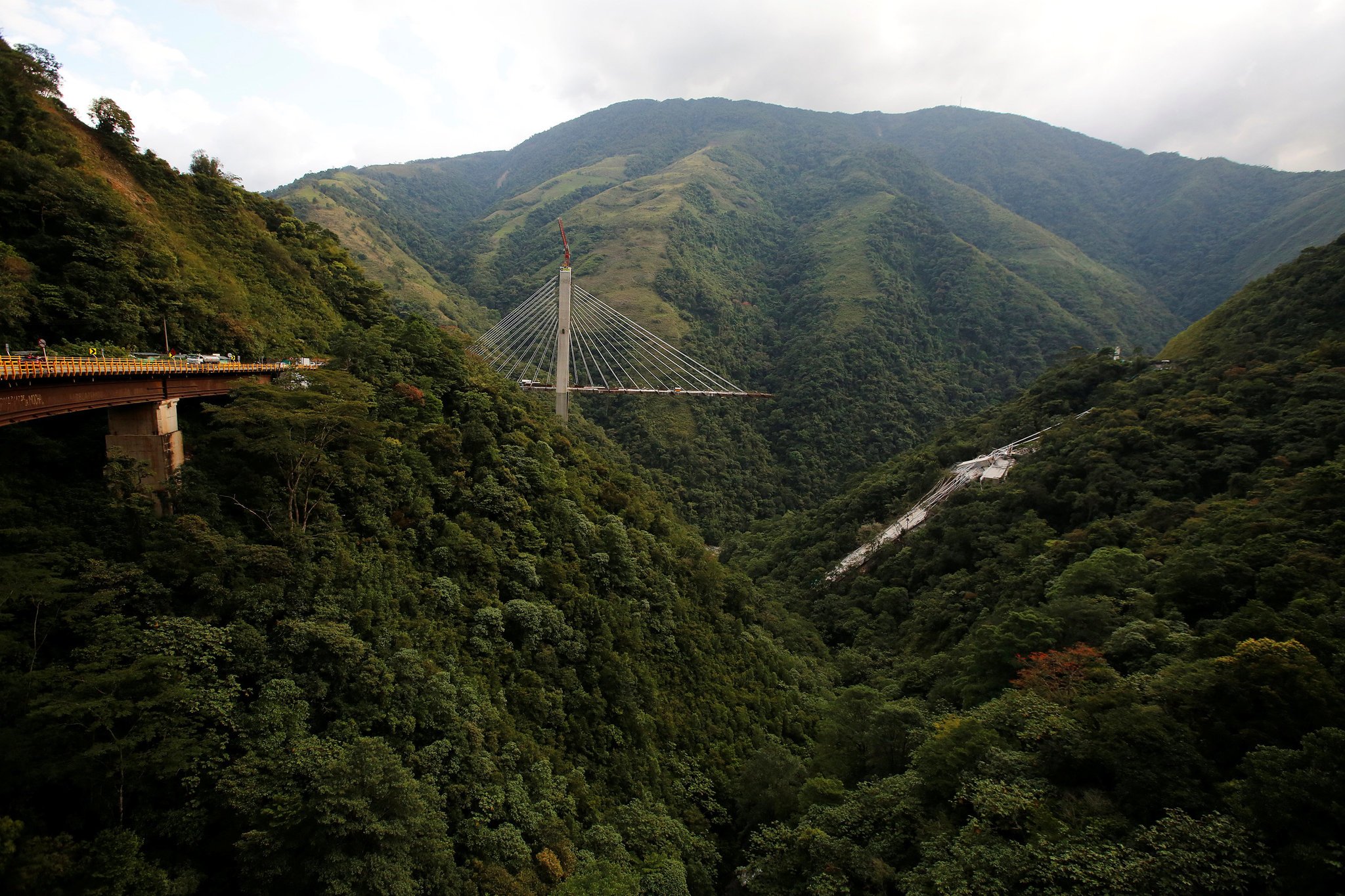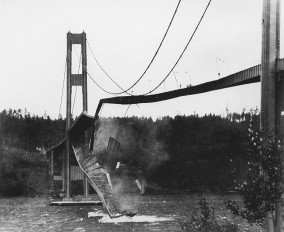Colombian under-construction bridge collapsed, probably due to high loads

The cable-stayed bridge, whose collapse killed 10 construction workers, was set to be opened in March as part of a major highway linked to the capital Bogota
On January 15th, a partially constructed bridge in central Colombia collapsed, killing 10 workers and injuring 8 more during scheduled drainage work. The Chirajara bridge, located in the Cundinamarca Department crossing a ravine at a height of 280 meters (920 ft), was part of an expansion of National Route 40 between Bogotá and Villavicencio. It was estimated to be 446 meters (1,463 ft) long, with about 80 m (260 ft) still being incomplete when the incident occurred. The structure was held by stay-cables from two support pylons, of which one collapsed. According to Coviandes, the Bogota-based infrastructure firm being in charge of the project, the part of the bridge that collapsed was already completed. The National Infrastructure Agency is investigating the case, while experts from the American Institute of Concrete (a non-profit organization) also visited the site in order to determine what might have caused the tragedy.
The first indications show that “unusual loads†during construction could be blamed for the collapse, and due to the geologically challenging terrain, there was probably an issue with the foundation of the main pylon that started it all. “Cable-stayed bridges often experience larger (and more different) forces during erection than those applied later on in life from the road traffic and environmental effects. This applies to any cable-stayed bridge, built anywhere. However in the developing world, the levels of quality control, management control systems, understanding, thoroughness, checking and independent review can be lower and less robust than one would see in the developed world. And therefore, unusual forces during construction might become more dominant, and sadly catastrophicâ€, says independent bridge consultant Simon Bourne. Furthermore, it has been observed that the still-standing other half of the bridge is at risk of collapsing as well and its demolition could take about two months, according to experts.
The bridge and road overhaul are a part of the country’s massive “4G†infrastructure program that is attracting billions of dollars in private-public partnership investments to improve Colombia’s transportation system with eight bridges and five tunnels.


Media
Want to read more like this story?

The most famous bridges of the world
Aug, 26, 2015 | NewsThere are so many bridges in the world in different styles, like old stone bridges or steely, footbr...

Types of bridges
Jun, 01, 2023 | EducationArch Bridge An arch bridge is a type of bridge that uses a curved, semi-circular structure, kno...

An engineering point of view for the Tacoma Narrows Bridge collapse
Apr, 04, 2023 | EducationIntroduction An iconic civil structure is a bridge. The desire for humans to go from place to...

Interesting bridges around the world
Mar, 20, 2017 | NewsEach one of them is unique in its own way! 1. Sidu River bridge,...

Bridge railing collapse in Chattanooga, Tennessee
Apr, 22, 2019 | NewsA concrete beam from a bridge located in Chattanooga, Tennessee failed and collapsed injuring one pe...

World's most frightening bridges to cross: Part 1
Mar, 20, 2020 | NewsBridges are structures that enable crossings over physical barriers including rivers, valleys and c...

One dead and two injured after bridge collapse in Belgium
Mar, 06, 2025 | NewsOn Thursday, March 6, a bridge collapsed near La Louviere, in southern Belgium, resulting in the de...

Florida pedestrian bridge collapses 5 days after its installation
Mar, 21, 2018 | NewsThe bridge, which was expected to open in January 2019, was being built using a method called a...

A bridge in Bhoranj collapsed hours after the shutters were removed
Mar, 31, 2023 | NewsA bridge, that was still being built, collapsed close to the village of Jahu in the Public Works De...
Trending

Spectacular interchanges around the world

New Release - STAAD.Pro 2024 - 2

ADINA 2025 for Structural WorkSuite

ADINA 2025 New Release!

Drilled Shafts Project on Gilbert Road Bridge

Powerful earthquake shakes central Philippines, dozens killed

Partial collapse of apartment building in NYC due to blast loading

